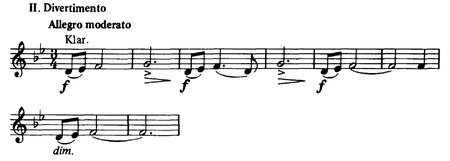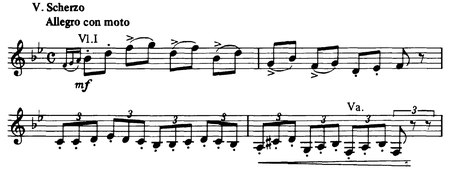
A suite, in Western classical music, is an ordered set of instrumental or orchestral/concert band pieces. It originated in the late 14th century as a pairing of dance tunes; and grew in scope so that by the early 17th century it comprised up to five dances, sometimes with a prelude. The separate movements were often thematically and tonally linked. The term can also be used to refer to similar forms in other musical traditions, such as the Turkish fasıl and the Arab nuubaat.

The Violin Concerto in D major, Op. 35 was the only concerto for violin composed by Pyotr Ilyich Tchaikovsky. Composed in 1878, it is one of the best-known violin concertos.

Manfred is a "Symphony in Four Scenes" in B minor by Pyotr Ilyich Tchaikovsky, his Opus 58, but unnumbered. It was written between May and September 1885 to a program based upon the 1817 poem of the same name by Byron, coming after the composer's Fourth Symphony and before his Fifth.
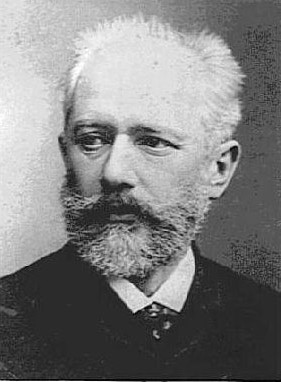
Pyotr Ilyich Tchaikovsky's Symphony No. 4 in F minor, Op. 36, was written between 1877 and 1878. Its first performance was at a Russian Musical Society concert in Moscow on February 22, 1878, with Nikolai Rubinstein as conductor. In Central Europe it sometimes receives the nickname "Fatum", or "Fate".

Pyotr Ilyich Tchaikovsky's Symphony No. 3 in D major, Op. 29, was written in 1875. He began it at Vladimir Shilovsky's estate at Ussovo on 5 June and finished on 1 August at Verbovka. Dedicated to Shilovsky, the work is unique in Tchaikovsky's symphonic output in two ways: it is the only one of his seven symphonies in a major key ; and it is the only one to contain five movements.

Pyotr Ilyich Tchaikovsky wrote his Symphony No. 1 in G minor, Winter Daydreams , Op. 13, in 1866, just after he accepted a professorship at the Moscow Conservatory: it is the composer's earliest notable work. The composer's brother Modest claimed this work cost Tchaikovsky more labor and suffering than any of his other works. Even so, he remained fond of it, writing to his patroness Nadezhda von Meck in 1883 that "although it is in many ways very immature, yet fundamentally it has more substance and is better than any of my other more mature works." He dedicated the symphony to Nikolai Rubinstein.

Pyotr Ilyich Tchaikovsky's Piano Concerto No. 3 in E-flat major was at first conceived by him as a symphony in the same key. But he abandoned that idea, jetisoned all but the planned first movement, and reworked this in 1893 as a one-movement Allegro brillante for piano and orchestra. His last completed work, it was duly published as Opus 75 the next year, after he died, but given by publisher Jurgenson the title "Concerto No. 3 pour Piano avec accompagnement d'Orchestre".

The Andante and Finale is a composition for piano and orchestra that was reworked by Sergei Taneyev from sketches by Pyotr Ilyich Tchaikovsky for the abandoned latter movements of his single-movement Piano Concerto No. 3 in E-flat, Op. 75.
The Concert Fantasia in G, Op. 56, for piano and orchestra, was written by Pyotr Ilyich Tchaikovsky between June and October 1884. It was premiered in Moscow on 6 March [O.S. 22 February] 1885, with Sergei Taneyev as soloist and Max Erdmannsdörfer conducting. The Concert Fantasia received many performances in the first 20 years of its existence. It then disappeared from the repertoire and lay virtually unperformed for many years, but underwent a revival in the latter part of the 20th century.
Pyotr Ilyich Tchaikovsky's Symphony in E-flat was commenced after Symphony No. 5, and was intended initially to be the composer's next symphony. Tchaikovsky abandoned this work in 1892, only to reuse the first movement in the single-movement Third Piano Concerto, Op. 75, first performed and published after his death in 1895. Two other movements were reworked for piano and orchestra by Sergei Taneyev as the Andante and Finale, which was published as Tchaikovsky's Op. posth. 79 in 1897.
The Orchestral Suite No. 4, Mozartiana, Op. 61, is an orchestral suite by Pyotr Ilyich Tchaikovsky, written in 1887 as a tribute to Wolfgang Amadeus Mozart on the 100th anniversary of that composer's opera Don Giovanni. Because this suite consists of four orchestrations of piano pieces by Mozart, Tchaikovsky did not number this suite with his previous three suites for orchestra. Instead, he considered it a separate work entitled Mozartiana. Nevertheless, it is usually counted as No. 4 of his orchestral suites.
Pyotr Ilyich Tchaikovsky composed his Orchestral Suite No. 3 in G, Op. 55 in 1884, writing it concurrently with his Concert Fantasia in G, Op. 56, for piano and orchestra. The originally intended opening movement of the suite, Contrastes, instead became the closing movement of the fantasia. Both works were also intended initially as more mainstream compositions than they became; the fantasia was intended as a piano concerto, while the suite was conceived as a symphony.
Pyotr Ilyich Tchaikovsky composed his Orchestral Suite No. 2 in C major, Op. 53, in 1883. It was premiered on February 16, 1884 at a Russian Musical Society concert in Moscow, conducted by Max Erdmannsdörfer. The piece was well enough received to be repeated a week later. It is dedicated to his brother Anatoly's wife, Praskovya Vladimirovna Tchaikovskaya.

Pyotr Ilyich Tchaikovsky was a Russian composer especially known for three very popular ballets: Swan Lake, The Sleeping Beauty and The Nutcracker. He also composed operas, symphonies, choral works, concertos, and various other classical works. His work became dominant in 19th century Russia, and he became known both in and outside Russia as its greatest musical talent.
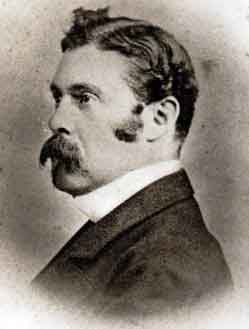
Marie-Alexis de Castillon de Saint-Victor was a French composer.
The Grand Piano Sonata in G major, Op. 37, was written by Russian composer Pyotr Ilyich Tchaikovsky in 1878. Though initially received with critical acclaim, the sonata has struggled to maintain a solid position in the modern repertoire. Nevertheless, the sonata has been recorded numerous times and is recognized as one of the composer's masterworks. It is dedicated to Karl Klindworth.
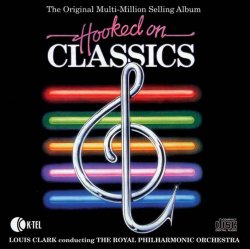
Hooked on Classics, produced by Jeff Jarratt and Don Reedman, is a multi-million selling album recorded by Louis Clark and the Royal Philharmonic Orchestra, published in 1981 by K-tel and distributed by RCA Records, part of the Hooked on Classics series.

The conductor Sir Thomas Beecham made several orchestral suites from neglected music by George Frideric Handel, mostly from the composer's 42 surviving operas. The best known of the suites are The Gods Go a'Begging (1928), The Origin of Design (1932), The Faithful Shepherd (1940), Amaryllis (1944) and The Great Elopement.
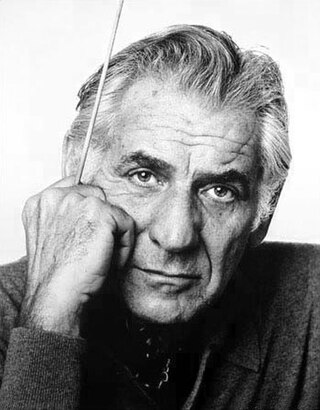
Divertimento, or Divertimento for Orchestra, is a suite of eight orchestral bagatelles by American composer Leonard Bernstein. Completed in 1980 and written to celebrate the centenary of the Boston Symphony Orchestra, it is well-known for featuring the notes B and C in most of its melodic material.

